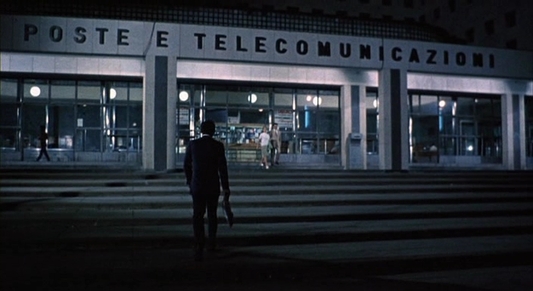 Elio Petri's Investigation of a Citizen Above Suspicion begins with a murder scene, where we witness a man brutally strangle his lover in bed. Shot in a overly-stylized way, the sequence is reminiscient of Italian Giallo films, but the audience soon realizes that this film presents a very different type of Italian crime thriller. With the homicide police swarming over the murder scene, looking for answers, guess who is tasked with heading up the investigation? You guessed it, the murderer himself, police chief Ill Dottore. Elio Petri's film is a perverse parable about the relationship between power and corruption, using the Dottore as an absurdist, over-the-top character to do so. Investigation is a film about a very serious and important issue that is very topical to this day, but what makes the film truly memorable is the highly stylized, almost absurdist tone that the whole film has as it explores corruption Gian Maria Volonte plays this character with such unhinged bravado, a man whose power over the laws that he governs leads him feeling invincible, even helping the investigation at times asa way to keep things more interesting. He knows there is no way he could possible go to jail for his crimes, and this over-the-top character just makes the film's deeper meaning more potent. There are very funny sequences throughout this film where Dottore is basically attempting to get himself arrested, and moments where doubt creeps in about his invinicibility, forming a complex character. As the film unfolds, it's revealed that Dottore's reasoning for the murder go somewhat beyond the thrill of not getting caught, harkening back to the adage "it's always about a girl", but that doesn't take anything away from the film's warning against power and corruption. Tonially unique and thematically important, Elio Petri's Investigation of a Citizen Above Suspicion wears its message on its sleeve, using a playful, energized tone in doing so.
0 Comments
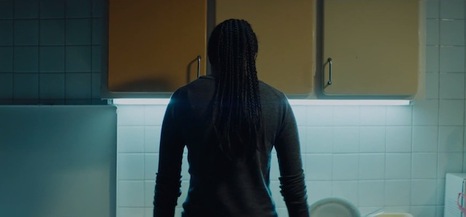 Marieme is 16-years old, growing up in a rough area of France with a family that oppresses her regularly. While her mother is never around, working as a nurse to support her children, Marieme is routinely abused by her older brother, who deals drugs for the neighborhood dealer. Marieme is failing at school and struggling in a drug culture that is basically a "boys club" in her neighborhood. One day at school Marieme meets three free-thinking teenage girls, adopting their style and way of life in an effort to find herself through freedom. Celine Sciamma has made two fantastic films about characters attempting to discover themselves and find acceptance in Water Lilies and Tomboy but with Girlhood Sciamma has outdone herself, making one of the better films of the last few years. Calling Girlhood a coming of age film is certainly accurate but it almost feels like a slight when talking about such a nuanced, socially revelant piece of filmmaking. Girlhood features an absolutely beautiful characterization of a woman trying to find herself, searching for acceptance in a hard male- dominated world. Sciamma masterfully uses this rough, drug culture lifestyle as a symbolic representation of our society as a whole, where woman are secondary and double-standards run rampant. Marieme lives in a world where toughness equates to power and respect, making this poor girl confused about herself. These three girls she befriends are her outlet but soon enough it becomes apparent that they also live in the same world as Marieme. Girlhood is as much about gender roles as it's a coming of age story, with Marieme being a character who only gains respect after embracing her masculinty. Her brother is only kind to her after she wins a fight, and the story sees Marieme going to extreme lengths fo appear less feminine. Celine Sciamma's Girlhood is a incredibly well-crafted story about young woman growing up in a male dominated world that is artistically impressive and emotionally resonant.  Jupiter Jones lives in Chicago, working for a maid service with her mother. Raised by her widowed mother, Jupiter misses her father, often looking up to the stars as if she feels desitned for important things. Her intiuition turns into fact when Caine, a genetically engineer soldier from another world, arrives on earth to track her down. Jupiter soon enough learns that the Earth is just a miniscule part of a much bigger world and her genetics give her the rights to an extrodinary inherentage that leads the powerful Abrasax siblings bearing down on her, the stake of the cosmos hanging in the balance. The Wachowski's Jupiter Rising is a big, silly space opera that features a muddled story and Channing Tatum's bad makeup work. While I wish the film would have embraced its b-movie storyliine a bit more, Jupiter Ascending is a movie that is kinda fun, considering the magnitude of the story. Say what you wil about the Wachowskis, and I could say a lot, they are still very capable of creating exhilarating action sequences and Jupiter Ascending does have plenty of those. Channing Tatum skates around the sky in his space boots with b-movie glee, and the aesthetic of the film is impressive. It's kinda a shame that this movie is going to laughed outta the theaters because the VFX designers for Jupiter Ascending did a fantastic job. This epic space world is beautiful designed and creative, being impressive eye candy for a script that struggles. Jupiter Ascending does have an obvious commentary about the 1% - the powerful taking advantage of the less fortunate and everyone having the same right to live. It's an interesting story arch but once again the script can be downright painful at times in spelling out the film's intentions. Jupiter Ascendings characterizations are bland, its script is poor, and it's incredibly silly but yet I found myself kinda enjoying the film, simply due to the vast world it creates and the no shame, absurdity of the storytelling. 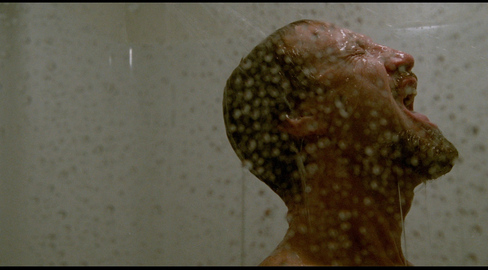 Joe Gideon, a brilliant Broadway choreographer and Hollywood director lives a fast-paced life where he has little room for anyone else. While his latest film has run substantially over budget, Joe's latest Broadway play is a few months from opening, leaving Gideon feeling pressure from everyone around him. Balancing his artistic endeavors, his ex-wife, his girlfriend, and his daughter, Joe is slowly wearing down, only finding solace in the amphetimines. Eventually Joe's physical body completely whithers, with Joe facing open-heart surgery due to his chain-smoking, drug-using, borderline nymphomaniac behavior. Bob Fosse's All That Jazz is a deeply personal, expertly crafted expose of show business and self-indulgence. Joe Gideon is a character bound by ego, an auteur who is striving for perfection and All That Jazz explores how little room that leaves for empathy in his life. This is not a man that is a very likeable character but one that by the end of the film the viewer comes to respect. All That Jazz is a personal film, like Fossi is spilling out his soul on screen in the form of Joe Gideon, seeking penance for everything he neglected while focusing on his craft. Roy Scheider gives the performance of his career as Joe Gideon, bringing energy and nuance to a neglectful character that shows moments of empathy and love. From a technical standpoint All That Jazz is a masterpiece, with dynamic quick-twitch editing that captures Joe's frantic lifestyle offering a glimpse of his current mindset. The editing is extremely well thoughout, with the scene where it becomes apparent Joe must be rushed to the hospital being show in almost slow motion, capturing Joe's body forcing him to slow down. The cinematography is equally impressive, with kinetic camera movements and expressionistic compositions. One of my favorite sequences in the film is after Joe has been hospitalized, with the play's main financiervisiting another choreographer. The scene opens with a composition that has a bar running vertically through the middle of the frame representing how these two men are not in business together. As they discuss plans that make it clear this man would take over the play in the event of joe's death, the composition, through slow motion, removes the barrier from the equation. Featuring beautifully choreography and impressionistic lighting, Bob Fosse's All That Jazz is a energetic exploration of a self-indulgent man which is full of both style and substance.  Rory Kennedy's Last Days in Vietnam chronicles the chaotic final days of the Vietnam War which saw the North Vietnamese Army bearing down on Saigon even after the flimsy peace treaty was signed. The approaching North Vietnamese troops sent the Southern Vietnamese citizens into a panic, and with the White House orders to evacuate only U.S. Citizens, U.S. soldiers and diplomats were faced with a moral dilemma. Obey government orders or go against them, risking their lives to save the lives of as many South Vietnamese citizens as possible. Last Days In Vietnam is a film about the moral obligations all of us have as members of humanity, capturing how rules or orders sometimes don't align with morality. While Last Days in Vietnam isn't particularly innovative in its craft, using a mixture of archival footage and personal testimonies, the film features some of the best use of archival footage in a documentary I've seen in awhile, creating a narrative and giving the viewer poignant insight into magnitude and chaos of this situation. Last Days In Vietnam is a film full of tension and suspense, playing out more like a narrative than a documentary, as the conflict intensifies. It reveals the humanistic and moral qualities that come to the surface in dire circumstances, as many brave American soldiers and citizens risked their lives to help out Southern Vietnamese civilians. A gracefully told story, Rory Kennedy's Last Days in Vietnam is a powerful story that is part thriller, part moral drama, representing a microcosm of Vietnam as a whole.  Taking place in the economically faultering city of Grand Rapids, Michigan, Joel Potrykus' Ape tells the story of Trevor Newandyke, a failing standup comedian, quasi-sociopath, and part-time arsonist. Trevor lives his life in solitary, in his small apartment where he spends lot of his time practicing his terrible jokes in front of the mirror. When he isn't bombing on stage in front of a live audience, Trevor likes to set fire to random things, getting a sense of joy out of the ordeal, similar to why a dog sticks its head out the window. One day, Trevor comes across a man dressed as the Devil, who gives him a Golden Apple. Nihilistic, strange, and downbeat, Ape is a film that takes a pensive look into a borderline sociopath who has little to no true ambitions. Trevor is not a violent character, quite the opposite, but he is incredibly immature and simple in the way he lives his life and interacts with the people around him. Trevor's life is something that he fails at daily, with humiliation not only on the stage but also in his everyday life. He is someone who wants to focus on the simple things, attempting the drown out the humilation in metal music and pyrotechnics. Joel Potrykus creates an impressive character study with Ape, embracing the nueroses of Trevor in an unnerving way. Given what sounds like a weighty and dark subject, Ape's crowning achievement is in the way it manages to be playful and carry a unique tone, given the film's nihilistic arch. A man of no future, the main protagonist in Joel Potrykus' debut feature is more than likely an exaggerated portrait of today's youth, a generation that lacks direction. 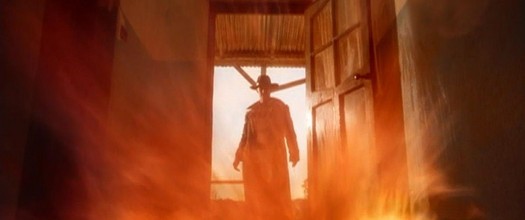 In South Africa, a series of grisly murders performed in ritualistic way plague the landscapes, committed by a shape-shifting demon known as the "Dust Devil". This spirit doesn't just prey on anyone, specifically targeting lonely and/or suicidal individuals who have nothing left to live for or fear. Wendy, a strong-minded woman, has recently left her husband, driving across the South African desert. Soon after picking up a mysterious drifter, Hitch, Wendy begins to notice strange occurrences that may be related to this mysterious man. Meanwhile the police investigate these murders, with Ben, a internally tormented detective, slowly beginning to realize that the murders may in fact be of supernatural origin. Richard Stanley's Dust Devil is a subversive horror film that combines spaghetti western imagery with African spiritualism, to create one of the most unique and transfixing genre films I've ever seen. Dust Devil is a film that is intentionally opaque, much more interested in creating an atmospheric mood piece rather than a traditional narrative. Nothing is spelled out in the film, but the characterizations of all three main characters are fascinating, each seemingly wrestling internally with despair. For anyone familiar with Richard Stanley's previous film Hardware, it should come to no surprise that Dust Devil is a visually-striking film with stylistic decisions that only aid creating this atmospheric experience. Full of barren landscapes drenched in reddish hues, Dust Devil visually portrays the death, isolation and despair of its characters, creating a truly unsettling experience from start to finish. Full of intriguing ideas and conversation pieces, Dust Devil is a truly compelling film from start to finish, though some of Stanley's intentions are hard to decipher. It's interesting how much of Dust Devil seems to be a symbolic representation of suicide, with Hitch almost being a representation of the Devil - someone who pushes these lonely and despair-filled individuals over the edge. While this interpretation may not hold much water to some, this is what makes Dust Devil so intriguing, being a film that welcomes a vast amount of interpretations. Slow-paced yet hypnotic, Dust Devil is an extremely beautiful piece of genre filmmaking that subverts the horror/thriller genre, giving the audience something truly unique. 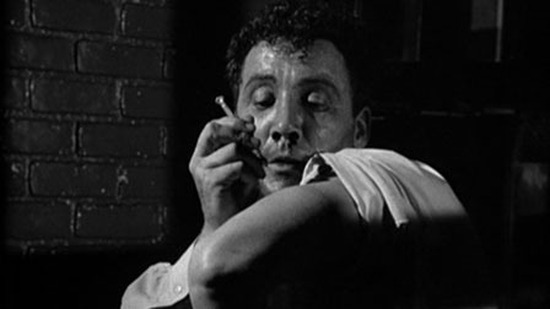 Based on the true story of welterweight boxing champion Barney Ross, Andre De Toth's Monkey On My Back chronicles the meteoric rise to fame and subsequent fall from grace of a man whose addictive personality took him down a dark path. A successful prize fighter, Ross put his career on hold and joined the Marines at the outset of WWII. Highly decorated in combat, Ross contracts malaria while fighting oversees but he soon finds himself struggling with Morphine addiction. Returning to the states, Ross has become a full-blown drug addict, struggling with a deep narcotics dependency that threatens to derail Ross' entire life. Andre De Toth's Monkey On My Back is a powerful examination of addiction, showing how even someone as strong as welterweight champion Barney Ross is no match for narcotics dependency. With a narrative that feels epic in scale, De Toth gives an intricate portrait of Barney Ross, showing the viewer a man who lives life too fast, always looking for the next adrenaline rush. Even from the onset, De Toth suggests that Ross has an addictive personality, always looking for the next thrill, and typically getting it through gambling. While a compelling narrative and character study, what really stands out about Monkey On My Back is its candid look at addiction, with De Toth using some phenomenal surrealist touches that effectively captures Ross's tortured psyche. Well-crated and featuring a strong central performance by Cameron Mitchell who captures Barney Ross' tortured soul in vivid detail, Monkey On The Back is a harrowing study of drug addiction that pulls no punches. 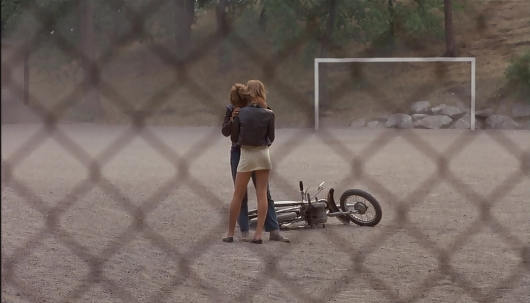 Fifteen year-old Par grows up in the countryside with his father and mother, routinely helping his father in his Auto repair business. One day while visiting his grandfather, Par notices the Annika, a beautiful fourteen year-old, though he never manages the courage to approach her. Par eventually does find the courage after a few subsequent encounters, with the two falling into love for the first time. Roy Andersson's A Swedish Love Story is a fantastic romantic drama that captures the power and importance of youthful optimism and exuberance. Par and Annika are very idealistic individuals, who from the onset of their relationship truly believe they will be together forever. What is interesting is how Andersson surrounds these characters with parents and older siblings who are deeply cynical, broken down from years of failed relationships and/or business ventures that have left many of them lacking much hope. Andersson juxtaposes much of these character's despair with these two young lovers' joy in a way that beautifully captures the essense of love, showcasing its ability to create optimism and joy in a cyncial world full of discouragement. For lack of a better word, Par and Annika are essentially oblvious characters, untouched by the sadness and discouragement all around them. While nearly every adult character is cynical I don't think A Swedish Love Story is a cynical film at heart. Instead, the film explores a very poignant ideal, in that happiness and despair are mostly dictated by oneself. One of Roy Andersson's earlier films, A Swedish Love Story is stylistically more subdued than his later work but the film still dazzles with beautiful imagery that evokes the emotion of its characters. While Roy Andersson's A Swedish Love Story could easily be described as a beauitful love story, the film's greater attribute lies in the cautionary tale it presents, reminding all of us that the world is what we make it. 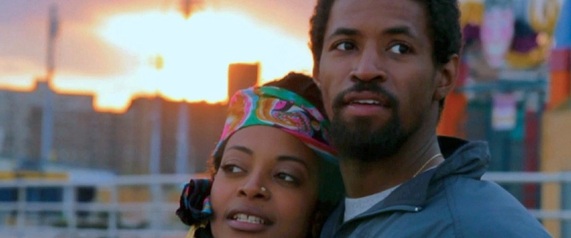 Lyle, a low-end repo man, lives in New York City where he struggles from day-to-day financially. His sole companion is his girlfriend Nina, an unemployed, capricious type of individual, who seems to go with the flow of life. The two share a love of Marijuana but while Nina's use of the drug ventures more into the existential reasons, Lyle's use is more directly associated with his inability to cope with his life. This distinction between the two in terms of Marijuana use is what slowly begins to pull them apart, with Lyle coming to the point where he has to decide between Nina and Marijuana. Shaka King's Newlyweeds is an odd, touching relationship drama that uses addiction as a catalyst to explore low-income, African-American life in New York City. Calling Newlyweeds a stoner film does it as disservice, as the relationship drama that unfolds between these two individuals goes far beyond drug use. While Newlyweeds treats pot addiction seriously, marijuana is simply the catalyst used to explore much deeper strife in Lyle and Nina's relationship. Lyle uses Marijuana as a form of anti-depressant, while Nina uses it as a way to enhance the world around her, a distinction that is very important in understanding how their relationship has gone astray. Using nuance and subtlety, Newlyweeds shows how Lyle is a man whose perilous career has broken him down, relying on Marijuana as a means of happiness. It's not his addiction to Marijuana that hurts their relationship but rather his inability to be happy without the drug, a distinction between him and Nina's use. Part moralistic drama, part absurd comedy, Shaka King's Newlyweeds offers a naturalistic relationship drama about two brooklynites with a penchant to get high. |
AuthorLove of all things cinema brought me here. Archives
June 2023
|
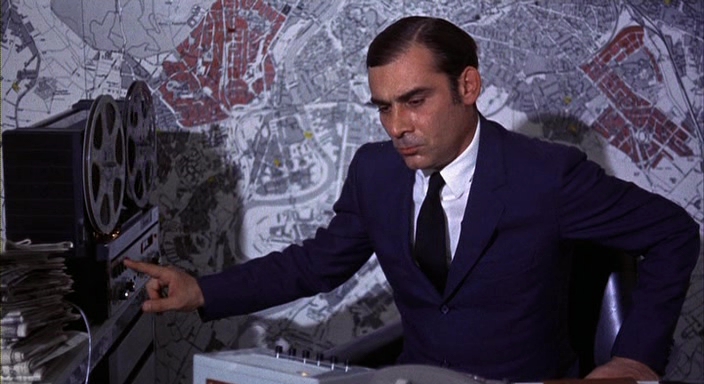
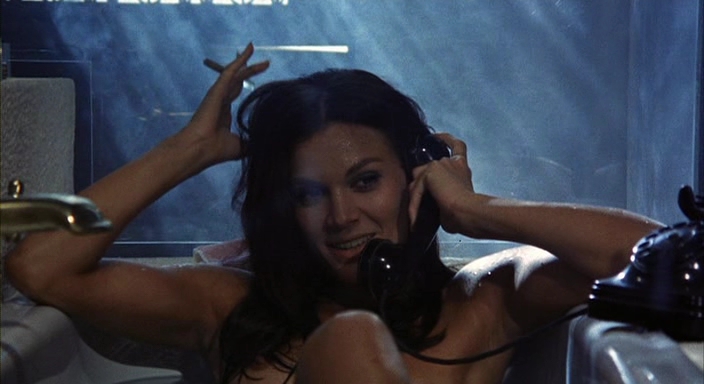
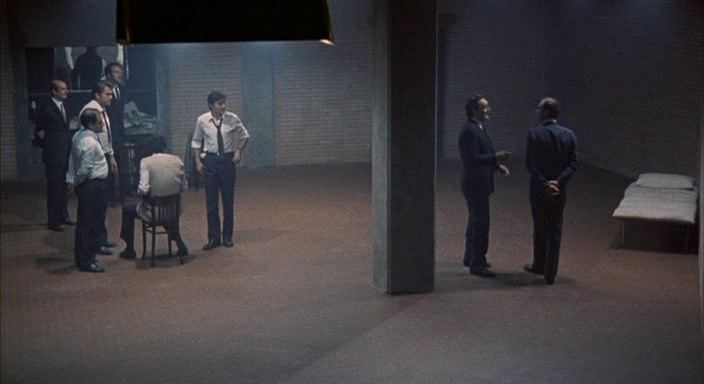
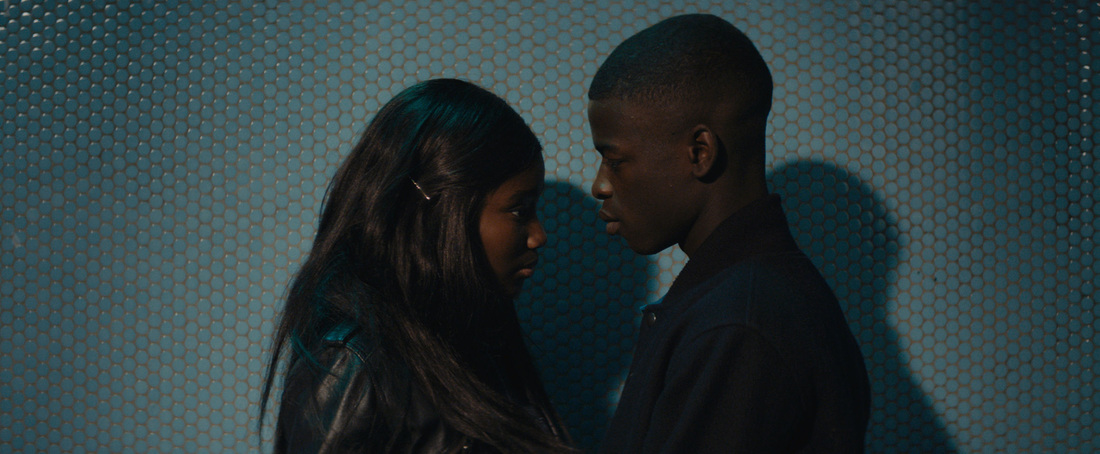

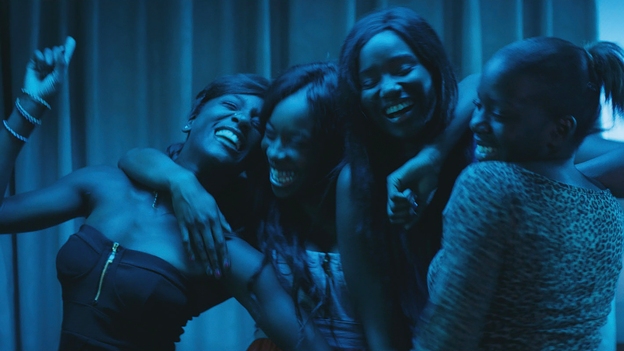
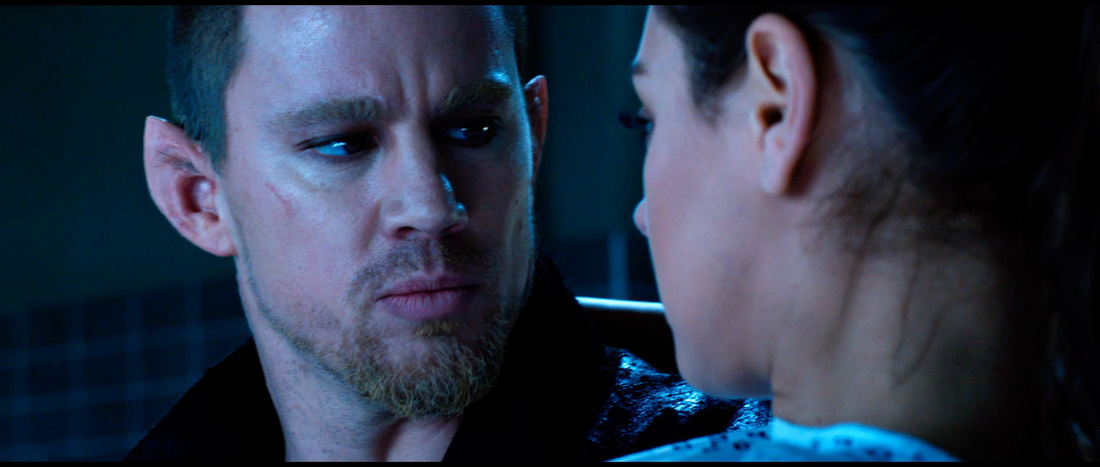

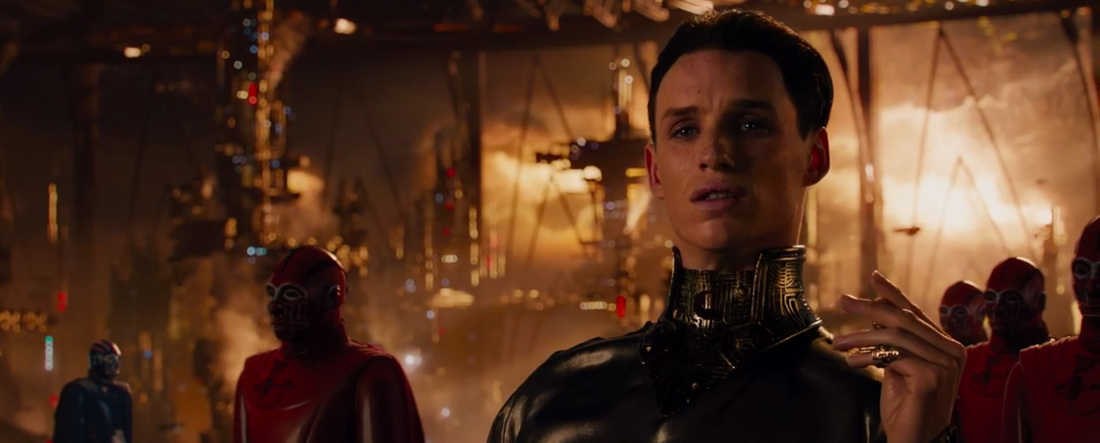
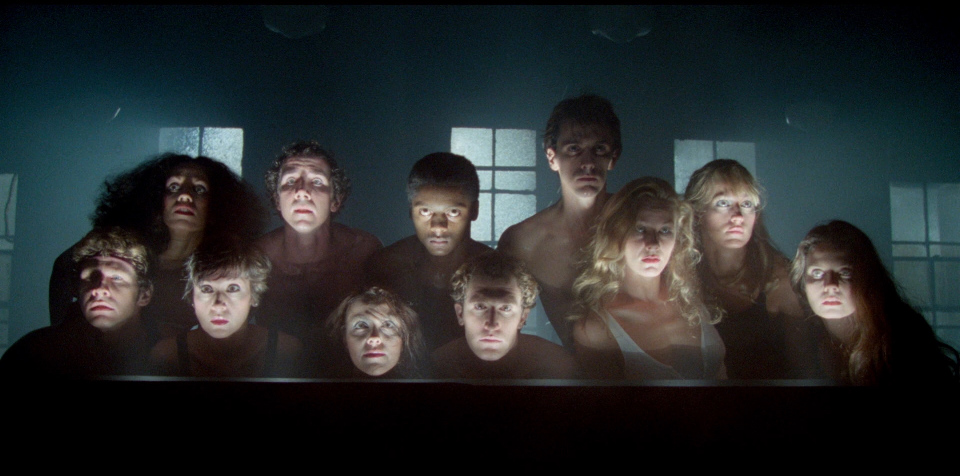
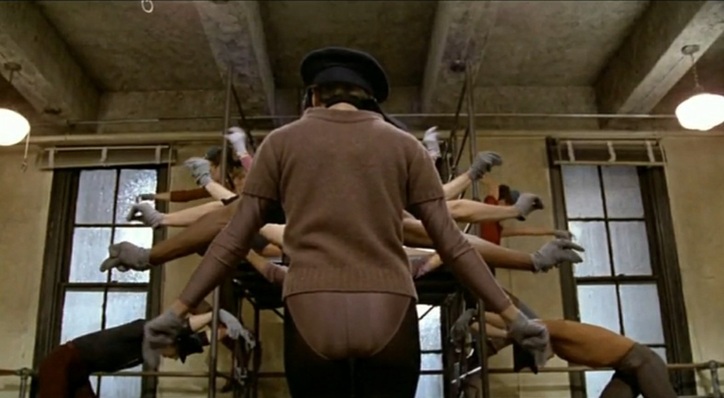
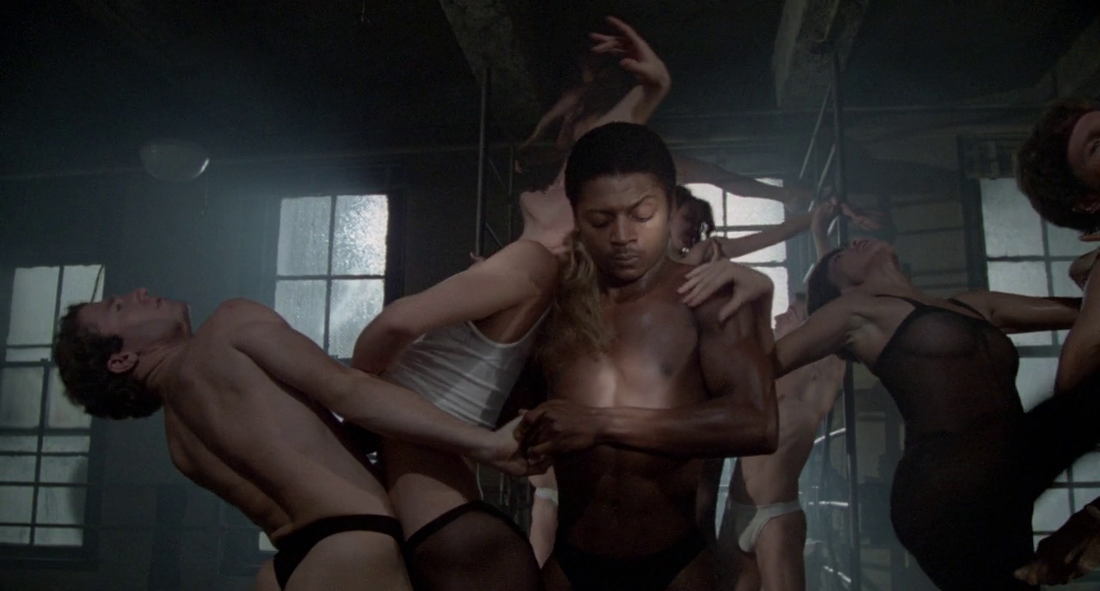



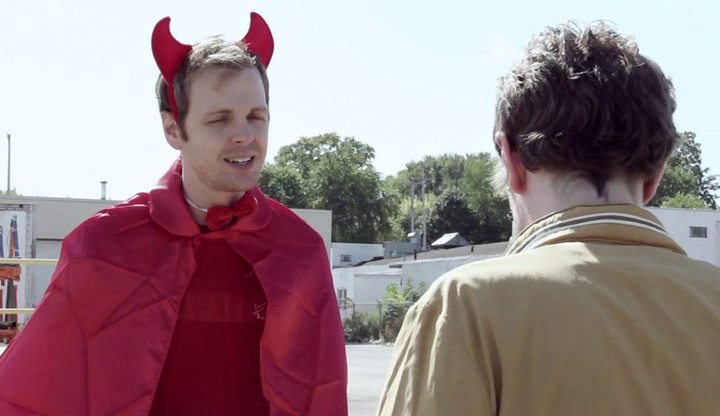

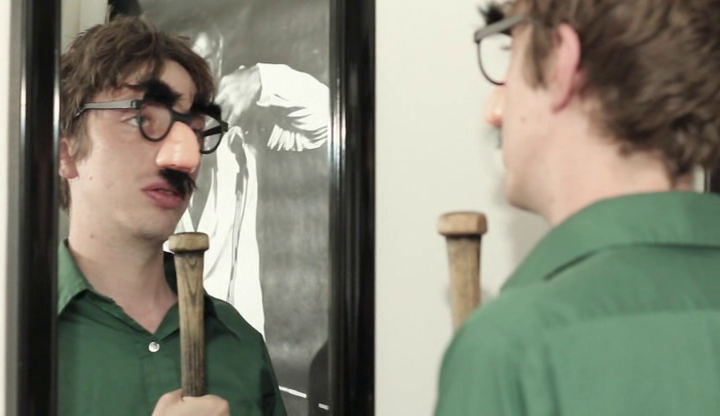
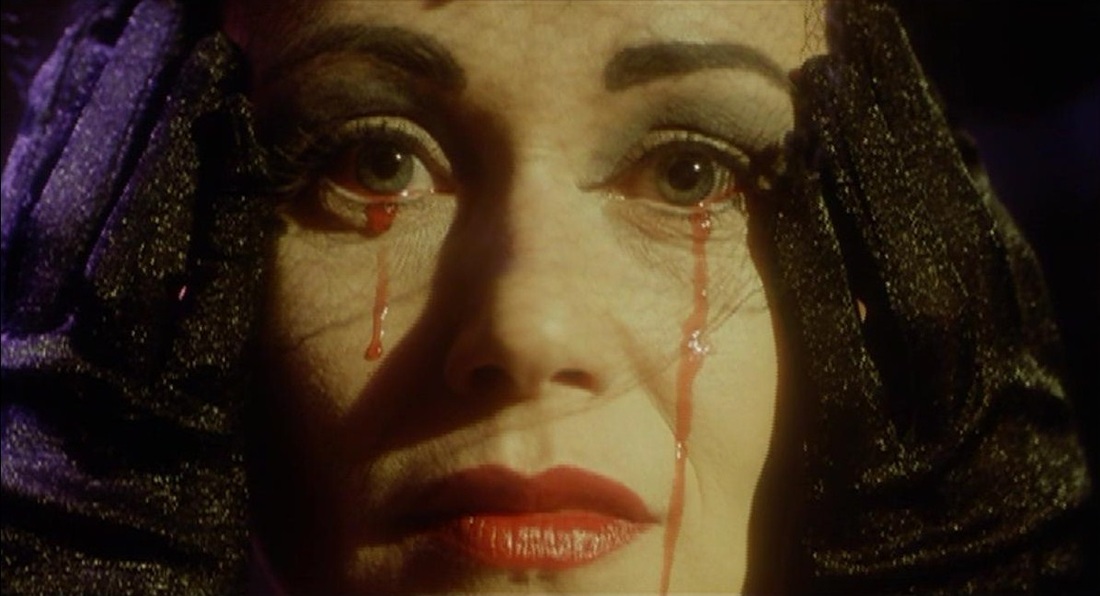
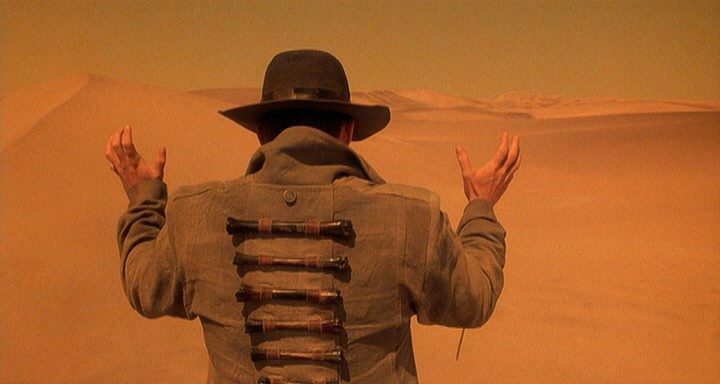

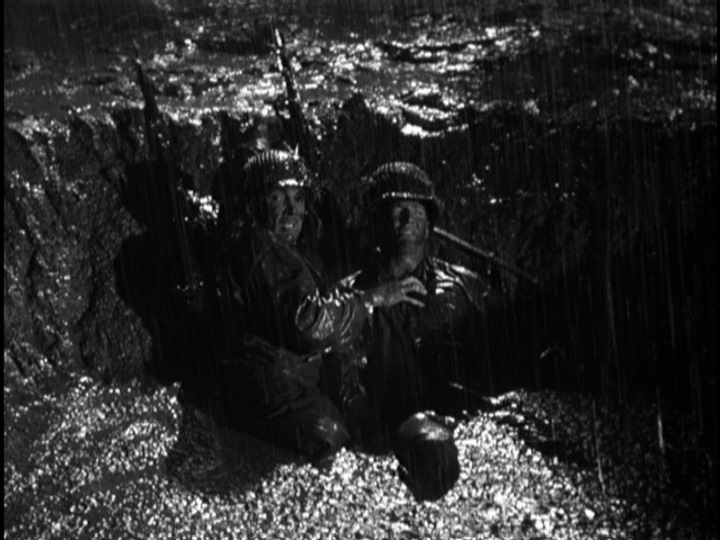
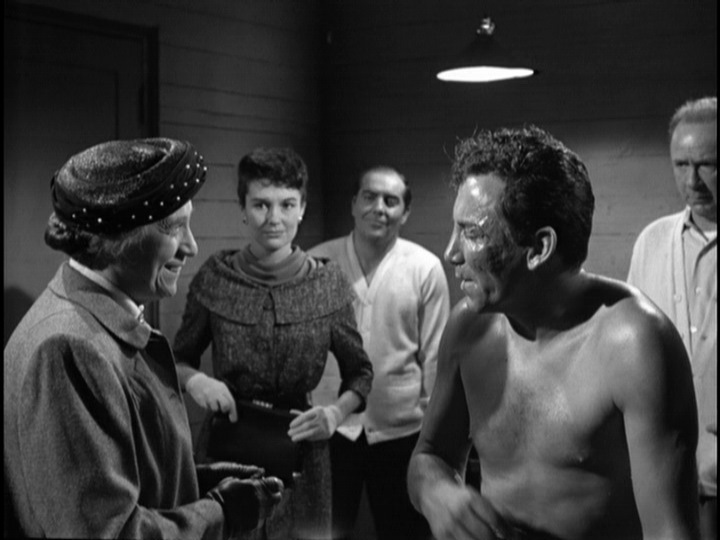
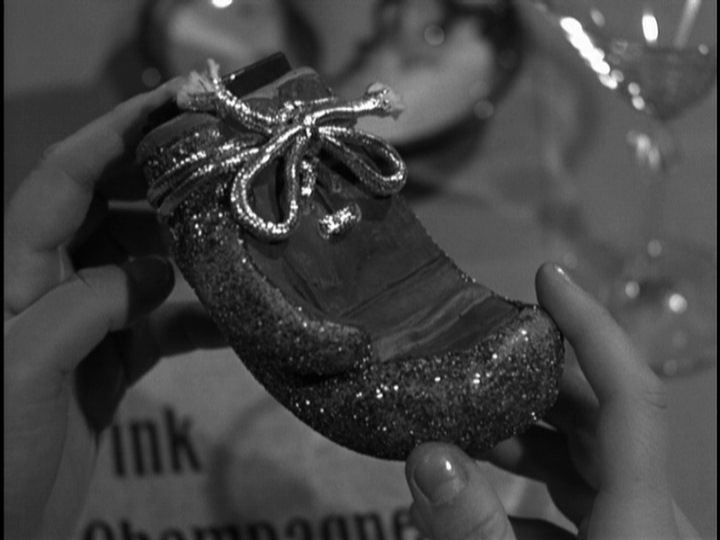


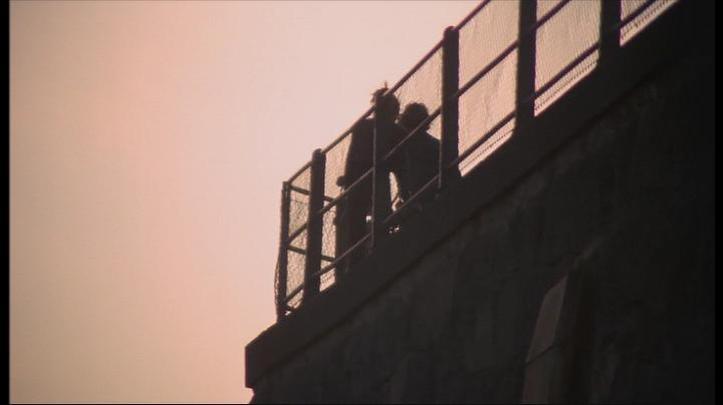
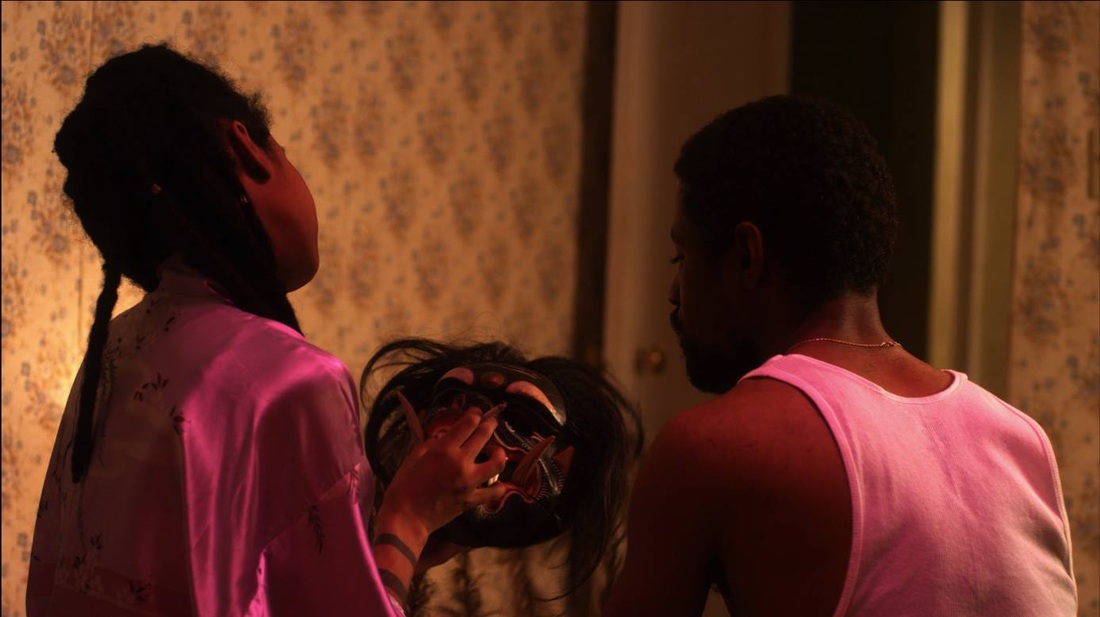
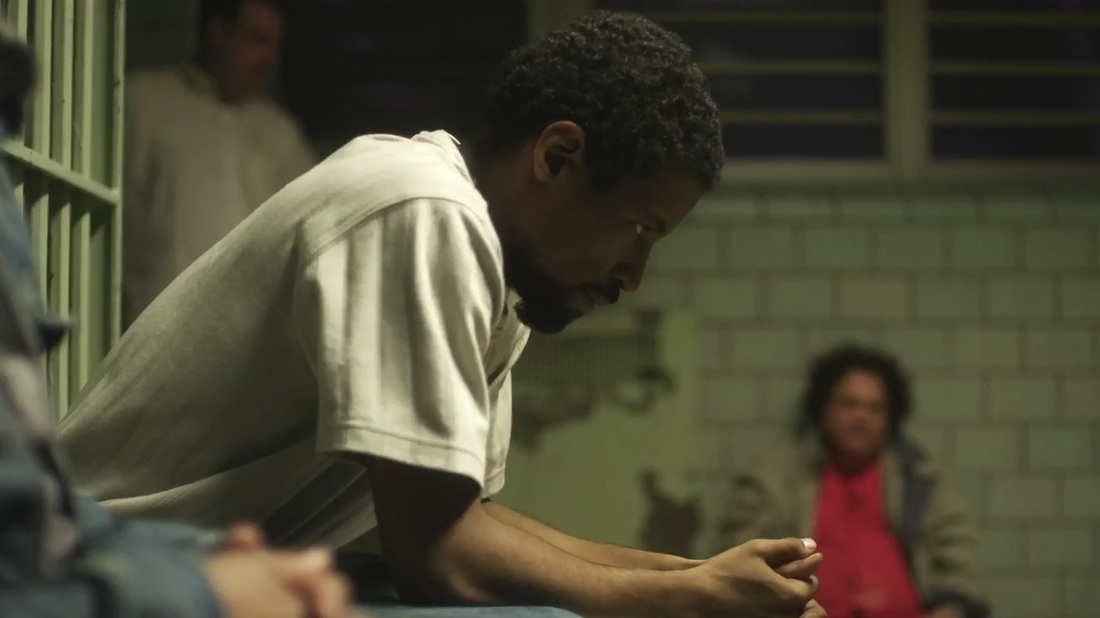
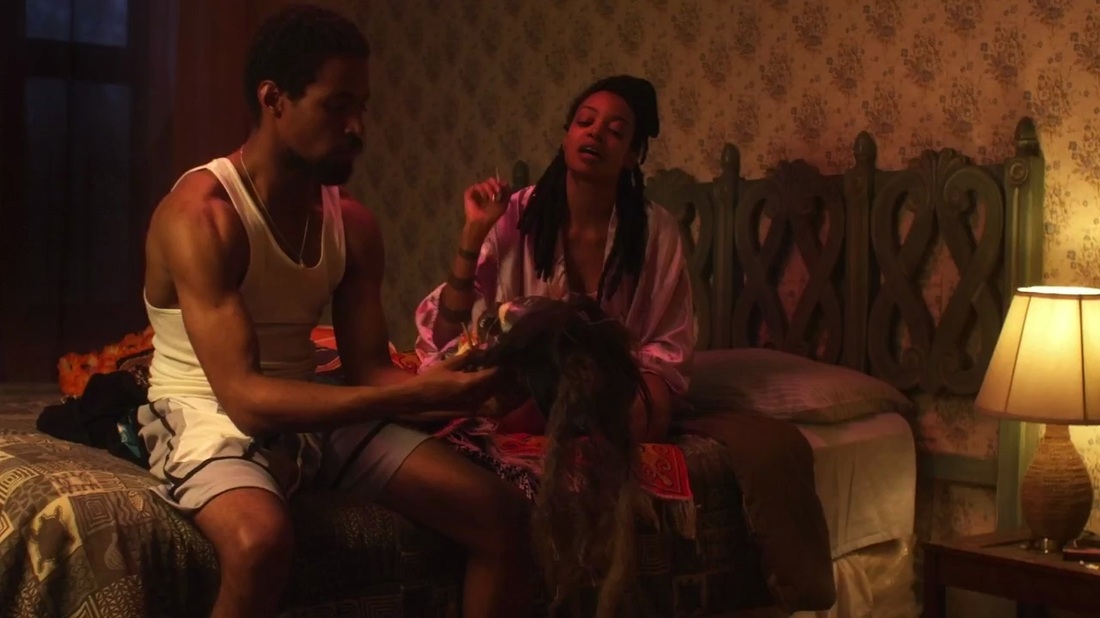
 RSS Feed
RSS Feed
